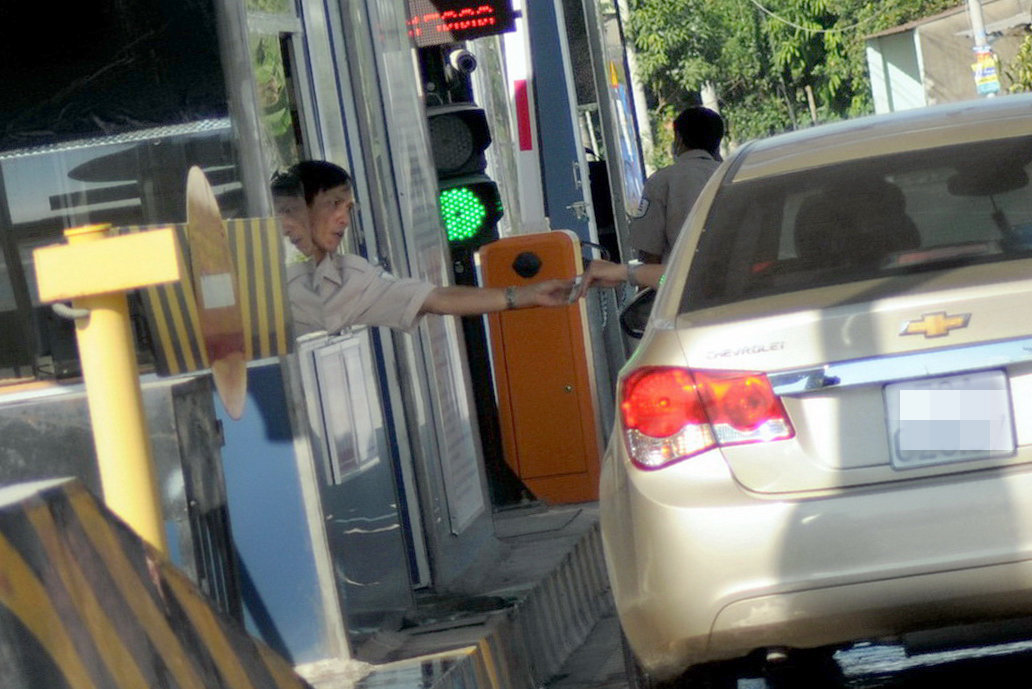Vietnamese businesses and people are worried about paying more for goods and services they purchase and use, and charging their customers more for what they sell from this year following the installation of many new road toll stations and the collection of higher fees there.
According to a recent finding of Tuoi Tre (Youth) newspaper reporters, those new stations have been set up on roads built by private firms under the build-operate-transfer (BOT) mechanism, and even on national roads, some sections of which have been maintained and repaired using funds from the private sector.
The Tuoi Tre reporters also found that many of those stations have just applied new fees, which are higher than the old rates, since the beginning of this year following a regulation of the Ministry of Finance, though the Ministry of Transport had recommended the finance ministry to delay the collection of the new fees to the middle of this year.
According to Decision 159 issued by the finance ministry in 2013, road tolls in 2016 will hit the ceiling rate of VND52,000 (US$2.28) per ticket per vehicle with fewer than 12 seats at stations permitted to collect them.
For trucks with a loading capacity of 18 metric tons or more and 40-foot container trucks, the highest fee of VND200,000 ($8.8) per ticket per vehicle can also be charged in certain cases.
Annual logistics expenses in Vietnam, covering the costs of transport, storage, warehousing, customs procedures and other paperwork, account for approximately 21-25 percent of the country’s gross domestic product (GDP), or around $37-40 billion, according to the Vietnam Logistics Business Association (VLA).
The VLA said logistics costs in Vietnam are among the world’s highest, which in turn lowers the competitiveness of Vietnamese companies.
The respective average logistics expense in the U.S., Europe, and the world is about nine percent, 13 percent, and 15 percent of their GDP.
Dense station networks in southern economic region
The southern economic region, which covers the provinces of Binh Duong, Dong Nai, Binh Phuoc, Ba Ria-Vung Tau, Tay Ninh and Ho Chi Minh City, has seen many of such stations up and running.
By the end of 2014, the region had contributed about 38 percent of the $186.2-billion economy and nearly 60 percent of tax to the national budget.
Nguyen Van Hoc from Vinh Cuu District in Dong Nai, who is the owner of two 1.25-metric-ton trucks, told Tuoi Tre that both the central and local governments are behind the establishment of many stations in the region.
Hoc added his vehicles have to pass two stations on a 7-kilometer section from his place to Bien Hoa City, which is the capital of Dong Nai.
If traveling on another route, the vehicles will also have to run through two other stations, which are located around 10 kilometers away from each other.
Authorities have ruled that any two stations must be located around 70 kilometers apart, he said, adding that he has to pay VND2 million ($88) more in tolls monthly.
Phuong, the driver of a coach the Tuoi Tre reporters once traveled with, had to pay a total of VND130,000 ($5.72) after passing five stations from Bien Hoa City to the coastal city of Vung Tau, and returning home.
Many drivers told Tuoi Tre the most convenient route for going from Ho Chi Minh City to the Hoa Lu international border gate in Binh Phuoc is National Highway 13, which now has three stations on a 156-kilometer section, including two in Binh Duong and one in Binh Phuoc, which is home to another one under construction.
Meanwhile, transport firms are facing similar hurdles when traveling from Ho Chi Minh City to the Central Highlands, and vice versa, as they have to pass eight stations in Gia Lai, Dak Lak, Dak Nong, Binh Phuoc and Binh Duong.
In Binh Duong, there are five toll stations within a 30-kilometer radius near the towns of Thuan An and Di An, bordering Dong Nai Province and Ho Chi Minh City.
In addition, there are two stations on a 20-kilometer stretch on Route No. 743 linking Thu Dau Mot City of Binh Duong with Bien Hoa City.
Binh Duong now has a series of BOT projects implemented on four interprovincial roads, which will surely lead to more stations being put up.
The same situation is taking place in Ho Chi Minh City, as under the scheme for toll stations in the city, it will have 13 stations in 2020 and the number will rise to 20 in 2025, in comparison with only eight stations at present.
On the national scale, there will be 96 toll stations by 2018, 83 of which are licensed by the Ministry of Transport and the remaining 13 by local governments.
It will be a huge leap from 45 toll stations nationwide as of May last year.
Like us on Facebook or follow us on Twitter to get the latest news about Vietnam!






















































